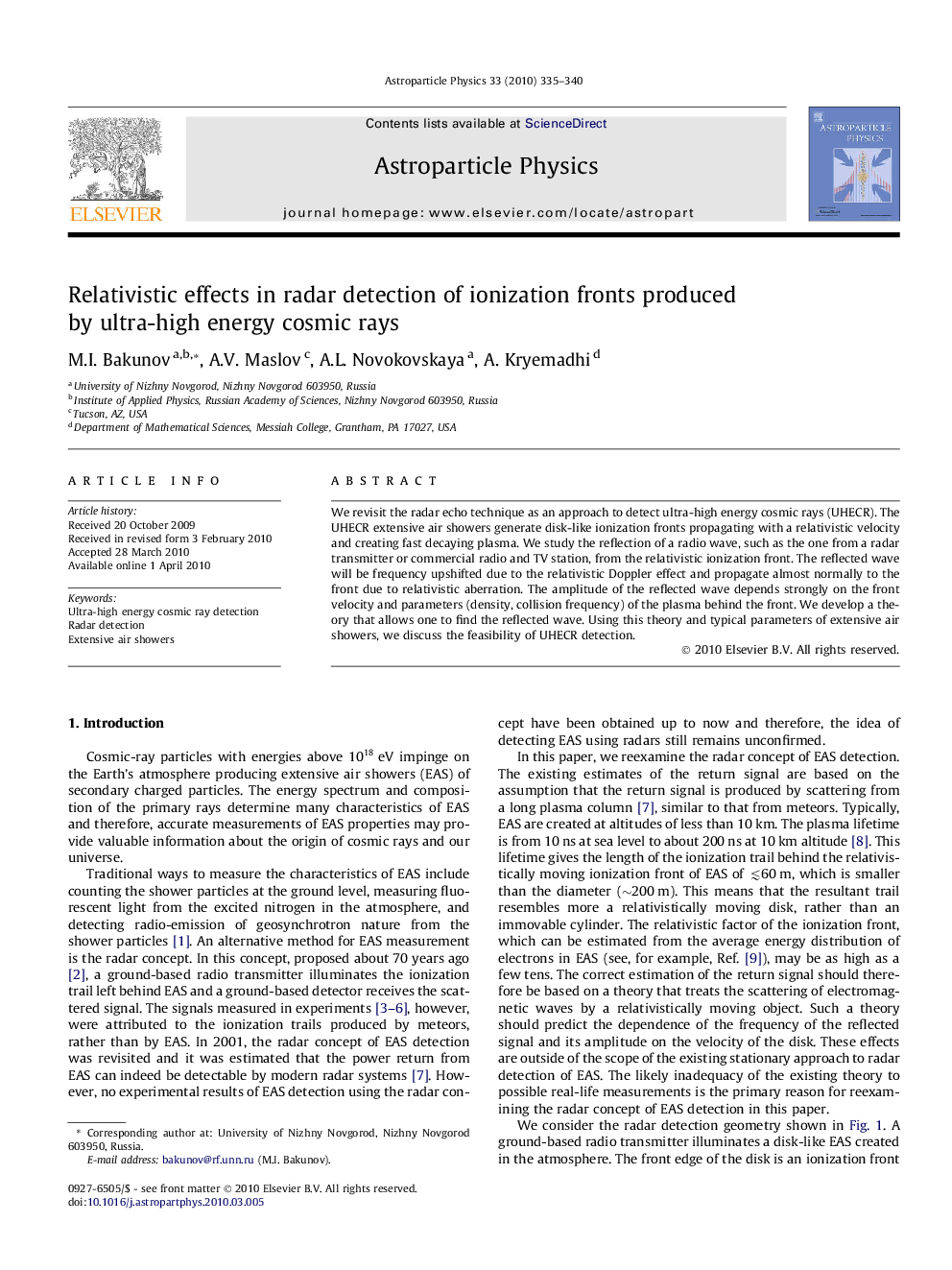| Article ID | Journal | Published Year | Pages | File Type |
|---|---|---|---|---|
| 1771344 | Astroparticle Physics | 2010 | 6 Pages |
Abstract
We revisit the radar echo technique as an approach to detect ultra-high energy cosmic rays (UHECR). The UHECR extensive air showers generate disk-like ionization fronts propagating with a relativistic velocity and creating fast decaying plasma. We study the reflection of a radio wave, such as the one from a radar transmitter or commercial radio and TV station, from the relativistic ionization front. The reflected wave will be frequency upshifted due to the relativistic Doppler effect and propagate almost normally to the front due to relativistic aberration. The amplitude of the reflected wave depends strongly on the front velocity and parameters (density, collision frequency) of the plasma behind the front. We develop a theory that allows one to find the reflected wave. Using this theory and typical parameters of extensive air showers, we discuss the feasibility of UHECR detection.
Keywords
Related Topics
Physical Sciences and Engineering
Physics and Astronomy
Astronomy and Astrophysics
Authors
M.I. Bakunov, A.V. Maslov, A.L. Novokovskaya, A. Kryemadhi,
